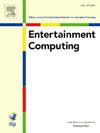Analyzing cross-platform gaming experiences using topic modeling
IF 2.4
3区 计算机科学
Q2 COMPUTER SCIENCE, CYBERNETICS
引用次数: 0
Abstract
Due to variations in platform characteristics and user preferences, user experience (UX) differs across platforms, and research on the UX of cross-platform games remains in its early stages. Accordingly, cross-platform games should be tailored to each platform’s unique characteristics. However, few studies have adequately considered these differences for cross-platform games. Given the unique concepts and content of cross-platform games, as well as the evolving technologies and user needs specific to each platform, it is essential to explore how each platform influences UX. To address this gap, we employed text-mining techniques to analyze UX from cross-platform reviews of Among Us. We identified 12 topics, four of which overlap between platforms. Our findings revealed that users on different platforms preferred distinct methods of chat and social interaction. PC users favored voice chat more than mobile users and expressed a higher demand for social communication. In purchasing patterns, PC users tend to prioritize additional content, such as expansions or downloadable content (DLC), while mobile users are more interested in character customization options. This suggests that developers should tailor strategies to each platform’s unique user preferences and behaviors to satisfy users across multiple platforms.
使用主题建模分析跨平台游戏体验
由于平台特性和用户偏好的差异,不同平台的用户体验(UX)也不同,而跨平台游戏的UX研究仍处于早期阶段。因此,跨平台游戏应该根据每个平台的独特特点进行调整。然而,很少有研究充分考虑到跨平台游戏的这些差异。考虑到跨平台游戏的独特概念和内容,以及每个平台所特有的不断发展的技术和用户需求,我们有必要探索每个平台如何影响用户体验。为了解决这个问题,我们使用了文本挖掘技术来分析《Among Us》跨平台评论中的用户体验。我们确定了12个主题,其中4个在平台之间重叠。我们的研究结果显示,不同平台上的用户偏好不同的聊天和社交方式。PC用户比移动用户更喜欢语音聊天,对社交的需求更高。在购买模式中,PC用户倾向于优先考虑额外内容,如扩展或可下载内容(DLC),而手机用户则对角色定制选项更感兴趣。这表明开发者应该根据每个平台独特的用户偏好和行为定制策略,以满足不同平台的用户。
本文章由计算机程序翻译,如有差异,请以英文原文为准。
求助全文
约1分钟内获得全文
求助全文
来源期刊

Entertainment Computing
Computer Science-Human-Computer Interaction
CiteScore
5.90
自引率
7.10%
发文量
66
期刊介绍:
Entertainment Computing publishes original, peer-reviewed research articles and serves as a forum for stimulating and disseminating innovative research ideas, emerging technologies, empirical investigations, state-of-the-art methods and tools in all aspects of digital entertainment, new media, entertainment computing, gaming, robotics, toys and applications among researchers, engineers, social scientists, artists and practitioners. Theoretical, technical, empirical, survey articles and case studies are all appropriate to the journal.
 求助内容:
求助内容: 应助结果提醒方式:
应助结果提醒方式:


